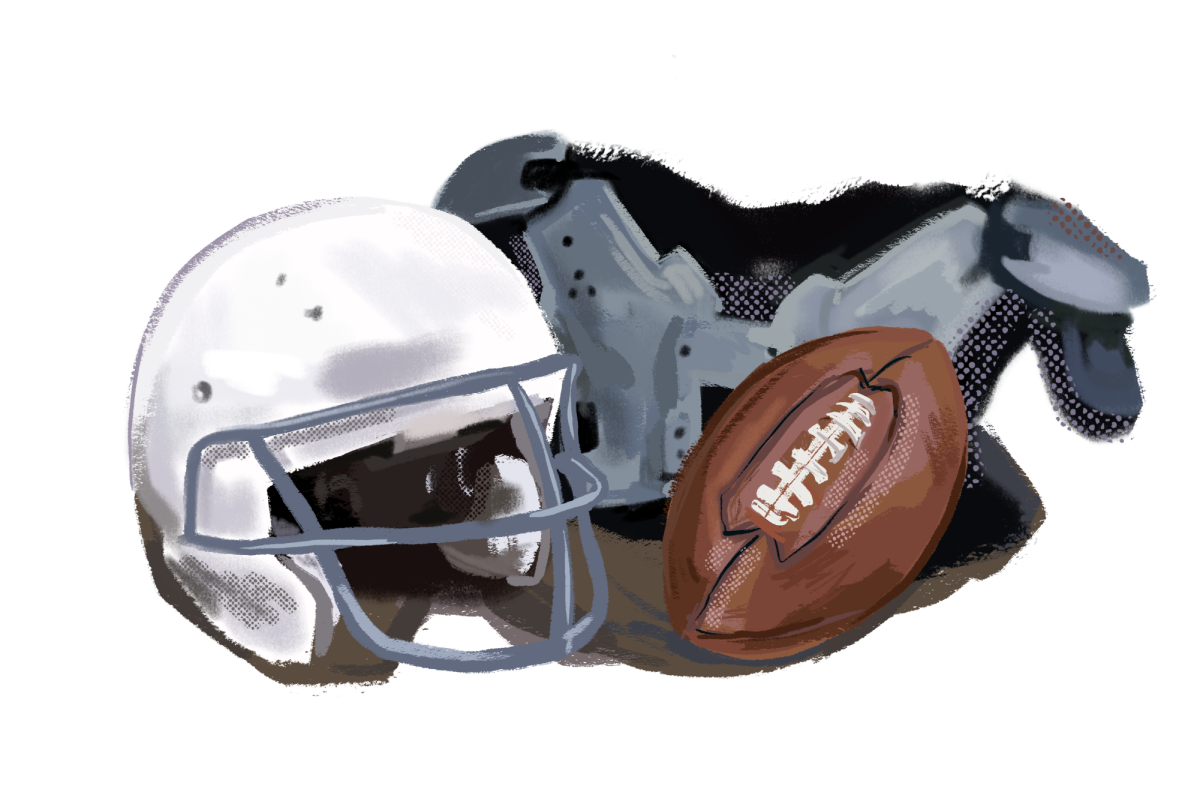Football is arguably the U.S.’ most beloved sport. Deeply ingrained in the entertainment and sports industries, it has served as a source of identity and history for rural towns and large cities alike. The sport has grown massively since its creation in the 19th century, with widespread participation and commercialization at the high school, collegiate and professional levels.
According to the National Federation of High School Associations, nearly 1 million male high school students played football during the 2021-22 school year. Yet increasing medical research and knowledge caused concern over the sport’s physicality.
This, perhaps, should come with little surprise: Players are constantly colliding with one another at high speeds and with significant force, either “blocking” or “tackling” to obstruct their opponents’ movement. Although players are required to wear protective gear, such as helmets and shoulder, leg and knee pads, injuries are frequent and can be dangerous.
Former junior varsity football player senior Ethan Fu cited these risks as his reason for quitting the sport.
“Given the frequency and sometimes severity of injuries, I didn’t want to get hurt and jeopardize my participation in basketball, my main sport,” he said. “When my JV team would train against varsity, I saw how much more aggressive they played, and I thought the risk was just too great.”
According to the University of Pittsburgh Medical Center, players are most likely to injure ligaments and muscles. Ankle, hamstring, wrist and knee sprains are fairly routine, though severe tears and breaks may also occur.
According to varsity football player senior Josh Kim, the team saw two torn anterior cruciate ligaments and a broken collarbone this past season — both injuries requiring surgery and long-term rest.
In recent years, however, medical professionals, parents and ex-players have looked beyond the purely physical repercussions of injuries. According to the NFHS, high school football players suffer an average of 11.2 concussions per 10,000 athletic exposures, defined as each individual time they play or practice football.
In the past, concussions were seen as standalone events and were treated as immediate concerns with short-term impacts. However, new research shows that concussions, especially when accumulated over time, can increase the risk of early-onset dementia, brain disease and Alzheimer’s disease. Since the human brain undergoes significant development during the teenage years, playing high school football is a direct threat to proper brain development.
Still, these brain injuries do not increase the likelihood of depression, as shown by a 2021 study published in the Frontiers in Neurology journal.
Kim also highlighted the relatively low occurrence of significant injuries compared to minor ones. “When a massive injury takes place, for example, when Damar Hamlin (of the NFL’s Buffalo Bills) went into cardiac arrest, those (injuries) are far less frequent than smaller sprains and tweaks,” he said. “And that’s why those injuries garner such media attention.”
While football has become safer in recent years — due to more emphasis on safe tackling techniques and more widespread use of protective gear — the inherently aggressive mechanisms of the game continue to cause injuries. In fact, even the use of protective gear may have unintended consequences: According to the Peltzman effect, individuals are more likely to make dangerous choices with new safety measures, since their risk perception decreases.
Though Fu stopped playing football, he is hesitant to describe the sport as “too physical” for high schoolers to play.
“I think, given the brain-development timeline, that tackle football should definitely not be played before high school,” he said. “For high schoolers, though, we are probably mentally developed enough to risk the physical and mental injuries.”
Though protective measures have come a long way, participating in football can result in both significant bodily injuries and development-hindering brain injuries. Such an assertion, however, doesn’t change much. To strap on shoulder pads under the Friday-night floodlights is, ultimately, the choice of an individual athlete and their family. The aforementioned NFHS numbers say it all — high school football saw nearly 1 million players in 2021-22, even in light of these growing concerns.
“Even after my collarbone injury, I don’t regret playing football or see the sport any different now,” Kim said. “It gave me a lot as a person, and, for me, that sort of outweighs everything else.”






























